Amorphophallus titanic
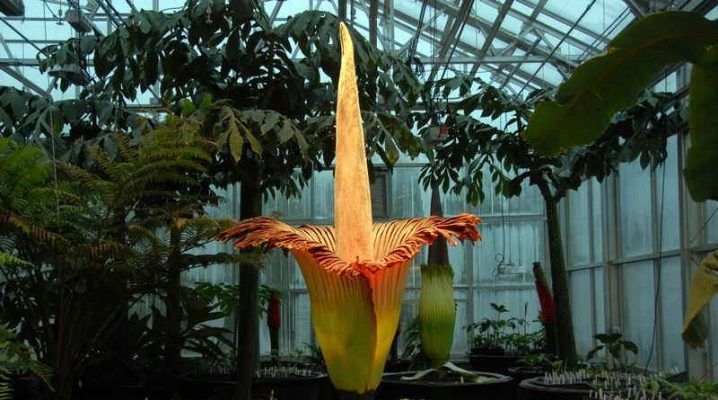
Amorphophallus titanic is an unusual and unique plant. Its place of growth is considered to be tropical forests in South Africa, the Pacific Islands, Vietnam, India, Madagascar. Interestingly, the plant usually grows in polluted areas.
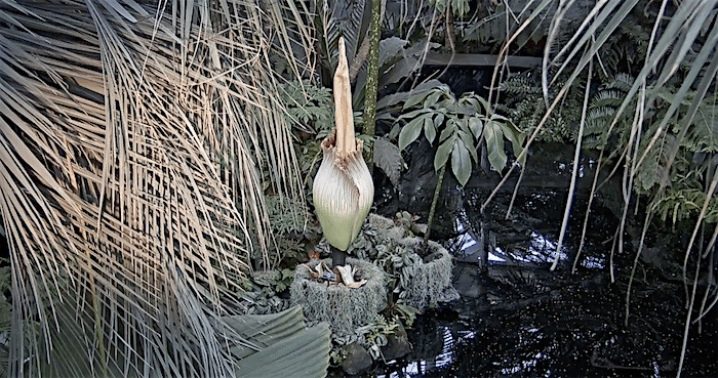
Characteristic
Amorphophallus titanic has a unique cob inflorescence and large tubers. The plant is characterized by the presence of an erect stem, one leaf, the size of which can reach 3 meters. The first time after planting, the flower blooms after 10 years. And the aboveground green part of the plant appears as the flower withers. After that, berries of bright colors are formed at the base of the ear. Flowering occurs irregularly. Sometimes it takes 6 years to form an inflorescence, and sometimes it is possible to observe almost every year how one of the unique plants of the planet develops.
Amorphophallus belongs to the Aroid species. An interesting fact is that another name for this plant is "Voodoo Lily". Some representatives of African tribes call it "Devil's tongue". Some growers call it "The Snake on the Palm", and because of the unpleasant smell, another name is "Cadaveric scent".

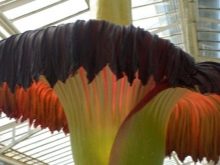

Care principles
Growing this plant on your own is very difficult. In most cases, the flower is acquired in the dormant stage, when its leaves turn yellow and fall off. During this period, indoor plant lovers think that the flower has died and buy a new one. In this regard, it must be remembered that the growing season of rest of the flower is 6 months. As soon as this period passes, the culture gives new leaves and departs from the vegetative period.
The plant is not very demanding for watering. Amorphophallus titanic is watered during active development, once a week. For these purposes, it is good to use a spray bottle. During dormancy, watering is reduced to a minimum. The bud begins to form even before the leaves form. The plant blooms for 2 weeks. At the same time, the tuber decreases in volume due to the fact that it consumes many minerals that are vital for the growth and development of the plant. Female flowers open earlier than male flowers. Because of this, Amorphophallus is not a self-pollinating plant.
In order for the plant to pollinate, several more specimens are needed, while they must bloom at the same time. After pollination, a collection of juicy berries with a large number of seeds is formed. In this case, the ancestor plant dies. After flowering, a large leaf should form.
The flower has a very unpleasant aroma, reminiscent of the smell of rotting meat. In natural conditions, it attracts the attention of flies that pollinate the plant. With self-cultivation, seeds are not formed
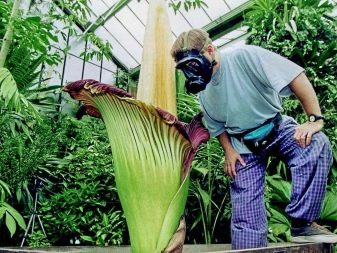
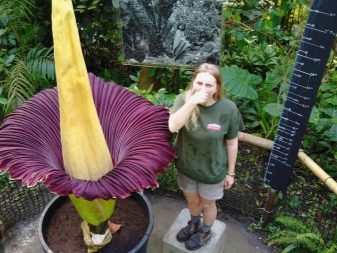
Crown formation
The flower has a tuber from which a giant leaf grows. Usually one is formed, in rare cases 2-3 pieces. It can be several tens of centimeters wide. On the tuber, it is one period of development, after which it disappears. After 6 months, a new one grows, more feathery, wider and larger. As the flower growers say, the leaf resembles the crown of a palm tree.
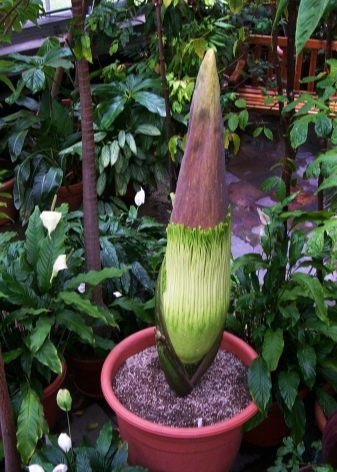
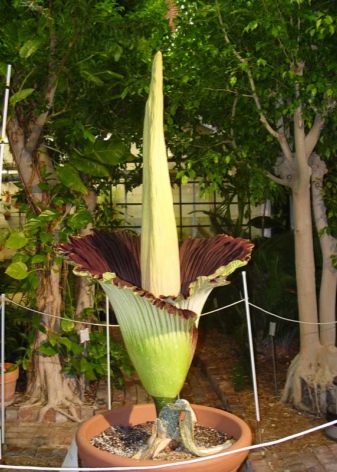
Landing
For planting, the substrate is prepared in advance. In its natural environment, the flower loves soil enriched with limestone. At home, a mixture of soils is considered favorable for growth and development, in the structure of which there are inclusions of peat, sand, humus, sod soil. In addition, all these soils are mixed with dressings, this enriches the plant with the necessary minerals and a complex of vitamins. In such an environment, the plant grows well.
In the upper section of the tuber, stem roots may begin to form. Because of this, the substrate is often poured into the plant pot. It is not necessary to allow the nodules on the mother tuber to be exposed. Tubers begin their activity in the spring, this becomes noticeable when sprouts appear on its surface. The size of the container should be three times the diameter of the tubers.
At the bottom of the container, drainage must be done. Half are covered with soil, a hole is made where the root system is located. Then the roots are covered with the remaining substrate, leaving the upper part of the sprout open. At the end of the procedure, the plant is watered and placed in a well-lit room.
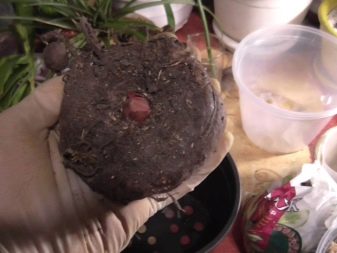
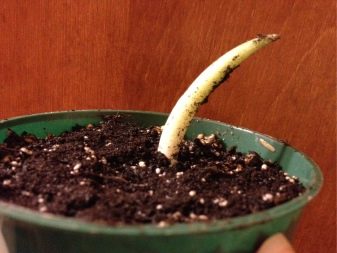
Reproduction
This process takes place by dividing the tubers. In this case, the largest ones are used. They are dug out of the container, some are cut off and distributed in containers, the remaining tuber is buried back. After a five-year period after planting, the plant can be considered fully formed. The next type of reproduction is the use of seeds. They are sown in a prepared container with a substrate and watered.
The best time for this is spring. The optimum temperature for this process is +18 degrees.
Growing
With proper care, it is possible to provide the culture with the ability to bloom and reproduce. The buds appear in the spring, they are rich burgundy. The flowers are covered with a brown haze. Plant height up to 5 meters. The life span is 40 years. During this time, the plant can bloom 4 times.
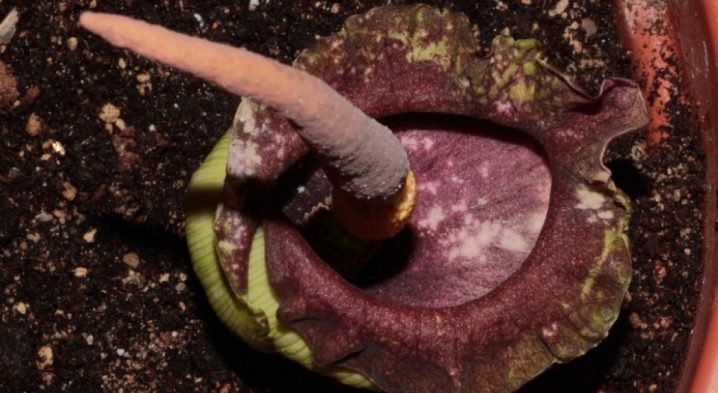
Temperature regime
The flower belongs to the thermophilic. The optimum temperature for its maintenance is from +20 to +25 degrees. The growth and development of a flower is well influenced by sunlight. At home, the best place for him would be a location near the window, but away from batteries and heaters.
Benefit brought
The plant's tubers are used in the culinary field. This plant is especially popular in Japan. Tubers are added to the first and second courses. In addition, flour is made from them, it is used for the production of homemade pasta. Dishes help eliminate allergies, remove toxins and toxins. In addition, they are used for weight loss.

Diseases and pests
Most often, the flower is attacked by aphids and spider mites. To combat them, the leaves are wiped with soapy water. Then they are treated with a special compound. Insects are perfect for insecticides - both ready-made and self-made. A mixture of tar soap and an extract of field herbs, a teaspoon of potassium permanganate diluted in a bucket of water, helps well.
Other types of Amorphophallus
- Amorphophallus "Cognac". It grows in Southeast Asia, China and the Korean Peninsula. It is slightly smaller than Titanic, but of great interest to botanists. The plant is widely used for growing in greenhouses and at home, despite its repulsive smell.
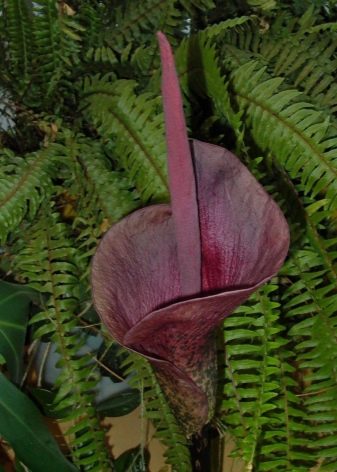
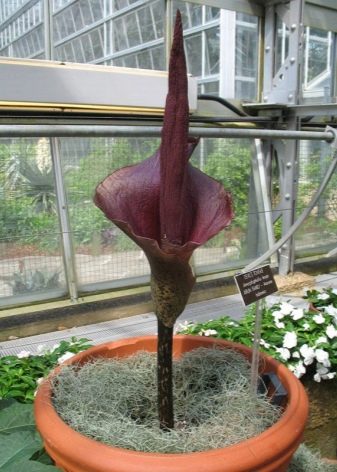
- Amorphophallus pion-leaved. Grows in China, Vietnam. One of the names is "Elephant Yam". The tuber of the plant weighs up to 15 kg and reaches 40 cm in width. This type is grown for human consumption. The tubers are fried and boiled like potatoes and ground into flour.
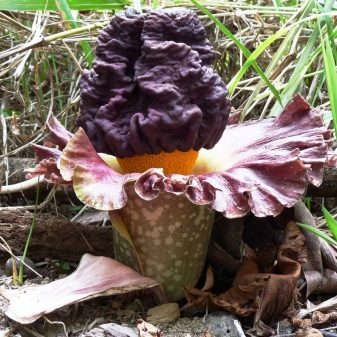
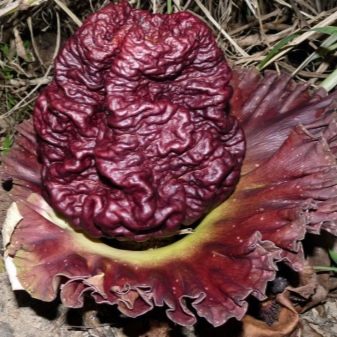
- Amorphophallus bulbous. It is rather an exception to the rule. It is considered the most beautiful of all types of this plant. It has a pointed ear, where there is a clear border between male and female flowers and a pink haze from the inside. In appearance it resembles a calla flower. And probably one of all types does not have a repulsive smell.
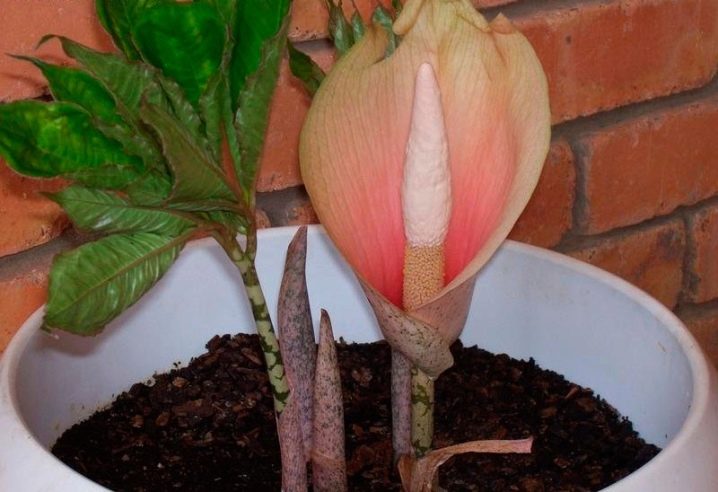
See the stages of flowering Amorphophallus titanic in the next video.

























The comment was sent successfully.